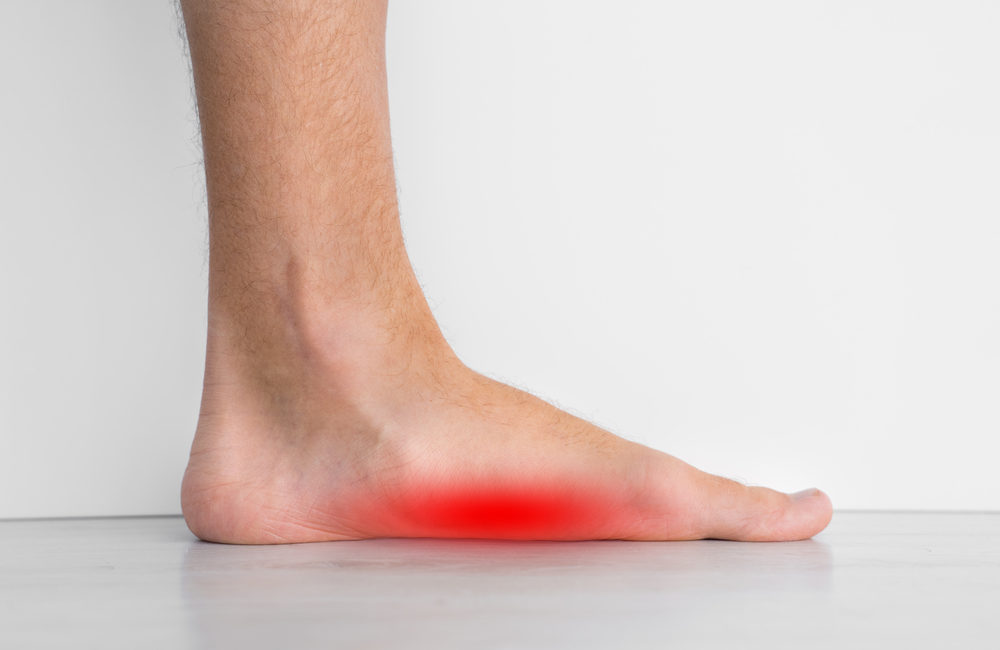Flat Feet – if it ain’t broke don’t fix it!

There are so many antiquated paradigms in medicine.
The blame for the ‘buy-in’ of outdated theories can be placed solely upon us as healthcare practitioners.
The general cadence goes like this:
A model is created decades ago that intuitively makes sense. This is taught in medical and paramedical education to knowledge thirsty students. The students become rigid and dogmatic in their belief of said model, and unwilling to be open to differing models that challenge their belief. They then disseminate this knowledge down to patients in their practices throughout their careers.
When Dave and I went through our sports residency, our medical biostats teacher taught us that it takes up to 15 years for new knowledge to be trickle down into actual medical practice!
That’s a long time and it also explains why some outdated theories seem to go on and on perpetually despite fairly clear evidence to the contrary.
An aside – likely my favourite of these was my wives great Aunt Gloria who told her to stop reaching overhead while she was pregnant because everyone knows it tears the baby’s umbilical cord.
One of these outdated models that needs to change is dreaded flat feet (over pronation).
The victimization of ‘flat feet’ is particularly widespread. Even shoe stores (ahem Running Room ahem) have 18 year old sales representatives telling folks they are ‘over pronators’ and need specific shoes to accommodate this dreaded malady.
We actually started writing on our blog about the paucity of research behind flat feet and specific footwear back in 2019. There were a series of papers in 2014 that we loved on over 7000 army, navy, and Air Force recruits during boot camp (where injury rates are particularly high). The study authors placed half of the participants in shoes to match their arch height, while in the other half they gave them all the same shoes regardless of foot type. The result? Absolutely zero difference in injury rates.
Then in 2018, a British Journal of Sports Medicine Editorial called out just how problematic the debate on matching footwear to arch height actually is (specifically in runners), essentially saying we just need to wear whatever shoes feel most comfortable.
A second aside – this paper had one of my favorite lines ever in a published medical editorial:
“Runners should be instructed to choose a certain type of running shoe over another shoe no more so than a blue shoe over a red shoe.”
One would assume this put the debate to rest right? Published evidence for 10 years? Editorials suggesting specific footwear prescription is about as important as what colour the shoe is?
Nope!
The debate has just slightly evolved. Instead of issues with footwear, now the focus has been segmented down to arch height. More specifically, the target has become flat feet.
A pre-print British Journal of Sports Medicine editorial was just published that caught my eye titled “Flat feet: Deformities or healthy anatomical variants?”
The number of patients that come into our office and state that their issues stem from having ‘flat feet’ is mind boggling.
There seems to be a unified attack against flat feet from health professionals. It turns out it is likely from their education where they were taught to demonize flat feet.
The problem stems from a paper way back in 1977 where a biomechanist created a model of ‘ideal feet’. Essentially they established specific criteria as normal and if your feet did not fit these, you have ‘abnormal’ feet that would be more prone to long term injury.
Seems simple enough. And since that time, flat feet have largely had an intervention of either specific footwear or orthotics.
The crazy thing is that this model from the late seventies was never really tested or challenged.
More recently, a couple of meta-analyses found there is only a weak link between flat feet and certain overuse injuries in the lower limb.
Even more recent systematic reviews and meta-analysis that the editorial draws attention to actually show that flat feet aren’t even a risk factor AT ALL for running injuries.
A telling sentence from the paper;
“Unfortunately, this situation often results in unnecessary interventions for asymptomatic flat feet (eg foot orthoses, motion control shoes), causing patients to become concerned about the appearance of their feet”.
The result? OVERDIAGNOSES!
Overdiagnoses is when you diagnose a problem that does not actually provide a net benefit to the individual. Overdiagnoses can cause physical, psychological and even financial harm, leading to needless overtreatment.
The researchers that wrote the editorial outlay a completely different thought paradigm surrounding flat feet. Instead of identifying them as a bogus problem, we should re-contextualize them as a benign anatomical variant (because that’s exactly what they are).
As humans, it is normal to have a wide dispersion of arch height across our species. Picking one particular arch height and stating that everyone’s feet should conform to that is insane when you step back and think of it.
Instead we should marvel at the natural diversity built into being human.
When people come into our clinic with flat feet and have no pain associated with those feet I often think back to the old adage If it ain’t broke, don’t fix it! That’s exactly what asymptomatic flat feet deserve…..nothing.
You may notice I added ‘asymptomatic’ in there. There is one important distinction to be made here. Some pathological conditions that coincide with flat feet do indeed require interventions. Some examples include plantar fascia pain, or tibialis posterior tendon issues (which can cause a lowering of one’s natural arch). In these instances we prefer to treat like we always do…..with exercises and foot strengthening as a primary means to improve the condition.
